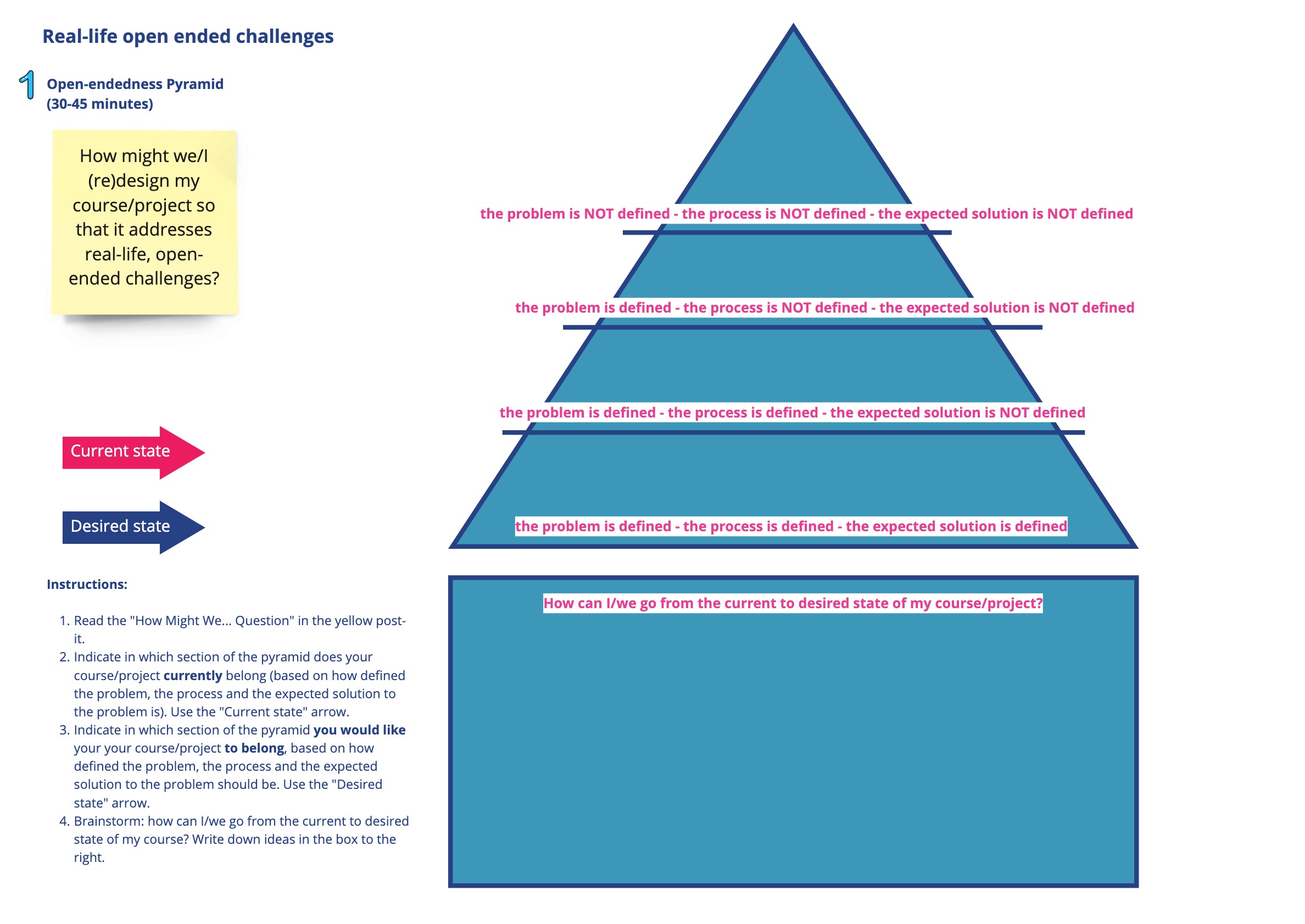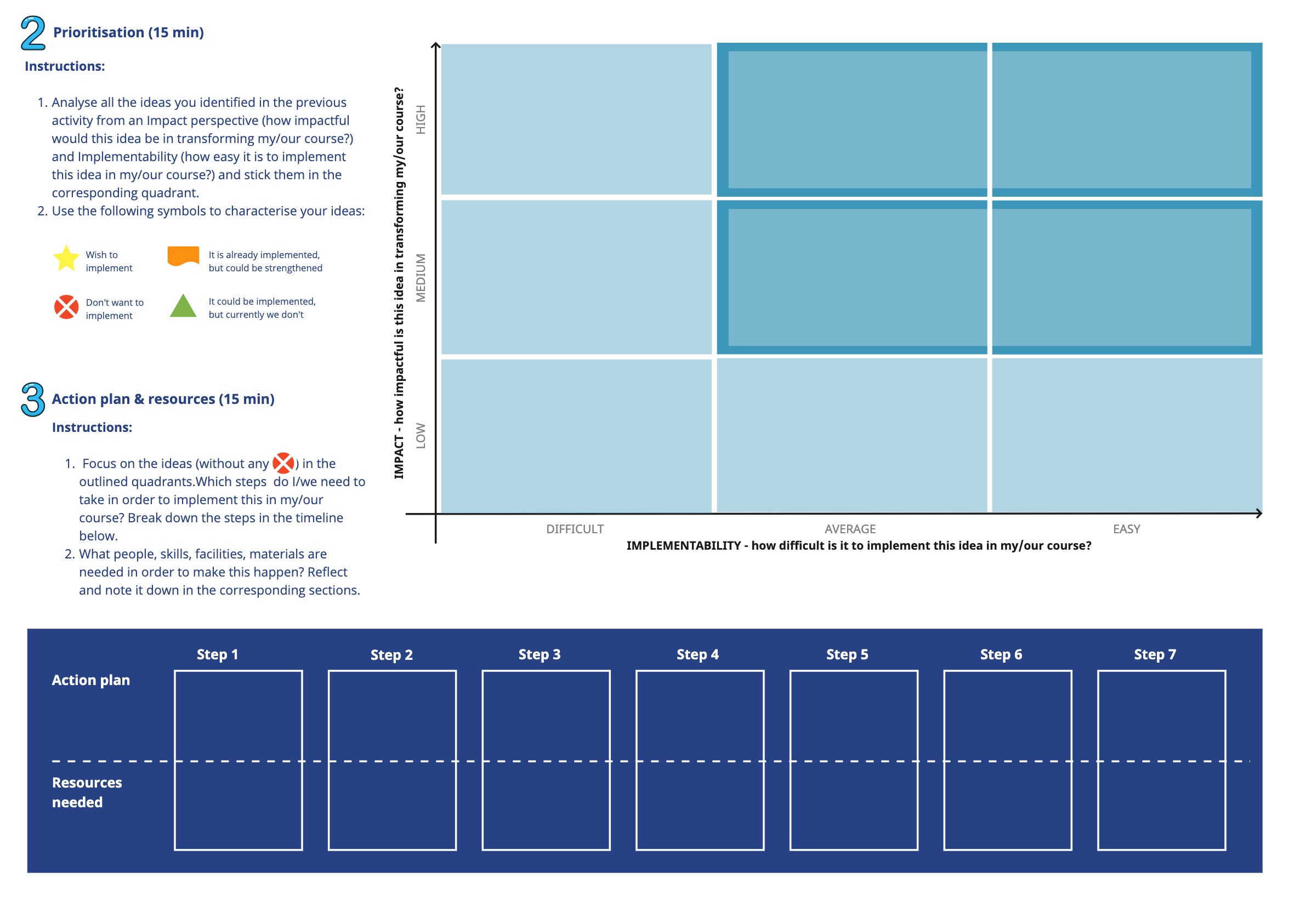Real-life open-ended challenges
How might we (re)design this course/project so that it addresses real-life, open-ended challenges? In this workshop, you will brainstorm ways for students to deal with complex, authentic problems that require them to develop and apply knowledge and skills from multiple disciplines. These challenges reflect the problems faced in the real world, and require critical thinking, creativity, and persistence to solve. To be able to respond to the challenge, students need to collaborate with students of other disciplines to develop innovative solutions
Duration
60-90 min.
Materials
For live session: post-its, pens, printouts of worksheets For online session: Miro template, charged laptop, internet.
People
2-6 people, 1 facilitator.
Preparation
It is recommended to have a basic understanding of constructive alignment prior to using this workshop. Learning objectives and assessment should be pre-defined.
Follow the steps of this workshop, to go from brainstorming on the topic of real-life, open-ended challenges, to prioritising and developing an action plan for the (re)design of your course/project.
The first activity of the method is called The Open-ended Pyramid. It is a reflection tool to compare the “current state” of the course and set the ambition for a “desired state”, in which the real-life and open-endedness of the challenges is increased. Follow the instructions below:
Instructions:
- Read the “How Might We… Question” in the yellow post-it.
- Indicate in which section of the pyramid does your course/project currently belong (based on how defined the problem, the process and the expected solution to the problem is). Use the “Current state” arrow.
- Indicate in which section of the pyramid you would like your your course/project to belong, based on how defined the problem, the process and the expected solution to the problem should be. Use the “Desired state” arrow.
- Brainstorm: how can I/we go from the current to desired state of my course? Write down ideas in the box to the right.
Now that you have a lot of ideas from the previous brainstorm, it is time to prioritise using this 3×3 prioritization template.
Instructions:
- Analyse all the ideas you identified in the previous activity from an Impact perspective (how relevant is this idea in making my course/project focused on real-life, open-ended challenges?) and Implementability (how easy it is to implement this topic in my course?) and stick them in the corresponding quadrant of the 3×3 template.
- Use the symbols that you find on the canvas to characterise your ideas: is it something that you wish to implement in your course? Or not at all? Is it something that is already somewhat implemented but could be strengthened? Or is it something that could be implemented, but you are currently not?
Now that you have a clearer overview of which ideas have more potential than others to be implemented, it is time to create an action plan!
Instructions:
- Focus on the ideas (that you haven’t marked with “Don’t want to implement”) in the outlined quadrants of the 3×3 template. Which steps do I/we need to take in order to implement this in my/our course? Break down the steps in the blue timeline on the canvas.
- What people, skills, facilities, materials are needed in order to make this happen? Reflect and note it down in the corresponding sections, named “Resources needed”.
At this point, you have a complete overview of which ideas you can integrate in your course and a step-by-step how to guide. Well done!
Resources and downloads
You can access the PDF worksheet canvases through the download button: they are ready for print.

Hey, this Chiara, Education Designer at TU/e innovation Space. How can I help you?
This toolkit is meant to be constantly evolving and improving. Do you have any questions or feedback to make this better? Or do you need help with the toolkit? Get in touch!

